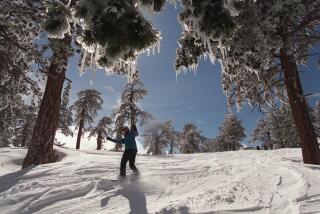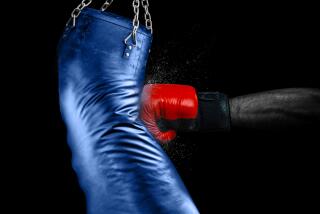James M. Cain’s ‘Paradise’ is prescient
Here’s the striking thing about James M. Cain’s essay “Paradise,” originally published in the American Mercury in March 1933: Even then, before many of the prevailing tropes about Los Angeles had yet to assert themselves, we were already looking at the place through a mythic filter, one Cain sets out to undermine. You can see it in that fantastic opening sequence, with its intention to wash out all the preconceptions that have emerged from “Sunkist ads, newsreels, movie magazines, railroad folders, and so on.” You can see it in the deftly rendered metaphor by which Cain reframes Southern California as a kind of watercolor, because it “blurs here and there, and lacks a very clear outline.”
He’s right, of course, as he is about the legendary “land of sunshine, fruit, and flowers” — all of which, he admits, are part of the territory, just “not with the lush, verdant fragrance that you have probably imagined.” For Cain, then, the idea is to cut through all the nonsense and offer up a vision of (as that long-ago issue of the Mercury promised on its cover) “What Southern California Is Really Like.”
“Paradise” is among Cain’s least-known efforts, an essay that has, in many ways, slipped between the cracks. Even to think of Cain as an essayist is to go against the grain; when we consider him, it is as a progenitor of the American hard-boiled tradition, a writer who, in novels such as “The Postman Always Rings Twice,” “Double Indemnity” and “Mildred Pierce,” evoked the desperation of Depression-era California, a cynical landscape where hope was often just another con.
In such a context, it’s tempting to read the essay’s title as ironic, since Cain’s fictional world is generally more of a paradise lost. But that’s the beauty of the piece — that it not only undercuts our attitudes toward California but also our attitudes toward Cain.
Sure, he has his issues: “You can drive for miles,” he tells us, “and the one thing you can be sure of is that you are not going to be rewarded for so much as one little scrap, one little unexpected bit, one hint of charm, that you can sit down with for a moment, and as I have said, take to bed with you at night.” And don’t get him started on the excess: “an endless succession of Rabbit Fryers, 50¢; Eggs, Guaranteed Fresh, 23 Doz.; Canary Birds, 50¢, Also Baby Chix Just Hatched; Car Mart, All Makes Used Cars, Lowest Prices; Orange Drink, 5¢; Eat; Drink Goat Milk for Health, Drive Right In…Finest English Walnuts, 15¢ Lb.; $100 Down Buys This Lot, Improvements Installed, No Assessments; Eat; Scotty Kennels, 100 Yds.; Pure Muscat Grapejuice, 35¢ Gal., We Deliver.”
Such a litany brings to mind Cain’s contemporary, Raymond Chandler, who in his 1949 novel “The Little Sister” dismissed California as “the department-store state. The most of everything and the best of nothing.” Yet unlike Chandler, Cain’s sense of the place turns out (here, at least) to be more hopeful than resigned. As he acknowledges partway through the essay, “[I]n spite of the foregoing, when you come to consider the life that is encountered here, you have to admit that there is a great deal to be said for it.” In the end, he concludes, Southern California has been marked for greatness, if for no other reason than its aspirations are so high. “[W]ith such vaulting ambitions,” he notes, “it might pull off something; you can’t tell. It is keenly aware of the Orient, and also of Mexico; streams are meeting here that ought to churn up some exciting whirlpools.”
Exciting whirlpools? Absolutely. We live in those eddies now. And with “Paradise,” Cain becomes among the first to recognize that possibility while in the process sketching a portrait of Southern California as it was and as it remains.
More to Read
Sign up for our Book Club newsletter
Get the latest news, events and more from the Los Angeles Times Book Club, and help us get L.A. reading and talking.
You may occasionally receive promotional content from the Los Angeles Times.







